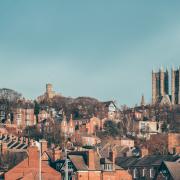This East Yorkshire town treasures its history and traditions but embraces the future too, says David Marsh
‘That uninteresting town’ was Victorian novelist Anthony Trollope’s rather unflattering description of Beverley. Doubtless the many visitors drawn to this East Yorkshire gem would disagree. It has to be acknowledged that Trollope may have had an axe to grind. A poor loser it seems, he made his assessment some time after Beverley’s voters rejected him when he stood for Parliament in 1868. There is also plenty of evidence to show Victorian Beverley was a thriving, bustling, historic and architecturally-interesting town of great charm – a description many modern day visitors would recognise.
The town’s historic heart remains intact. The splendid minster, market cross, the 15th century North Bar and street names such as Toll Gavel, Butcher Row, Ladygate, Hengate, Saturday Market and Wednesday Market are evocative of medieval Beverley. Fine Georgian terraces and the railway station – a Grade II listed building opened in 1846, are further evidence of the historic significance of Beverley, once England’s 10th largest town and one of its wealthiest.
Visitors who wander Beverley’s streets today will find a host of distinctive shops, cafes and restaurants along with pubs full of atmosphere. They are also likely to find something else – a festival. Beverley is a festival town – literature, food, early music, chamber music, folk music and puppets are just some of the things celebrated with a festival.
The annual Beverley Food Festival, which this year takes place on October 6th, has grown into one of the highest profile events on the town’s calendar. Its line-up of top chefs, local food producers, food workshops, huge array of stalls and family entertainment has proved a winning combination.
For Julian Minshall, of Beverley and District Chamber of Trade, the festivals are a sign of one of the town’s strengths – different organisations working together to put on events for the benefit of the whole town.
He said: ‘The chamber is all about working together to build a better business community for Beverley. The business community can then feed into other areas and organisations so that we can come together to deliver what’s right for the town.
‘One of the many positive things is the town council’s Wi-Fi project because people don’t want to be in a blind spot where they can’t communicate so easily. It’s a project that benefits businesses, residents and visitors.
‘I know I’m biased because I live here but I would say Beverley is unique. It’s not just the festivals, there’s so much more going on such as fashion week, bike racing, the horserace meetings and lots of Christmas events – in fact too many to mention. It’s also a town noted for its history and tradition.’
The town developed after John, Bishop of York, retired to this part of East Yorkshire in 718 and built a monastery. Miracles said to have taken place at his tomb attracted pilgrims from far and wide. John was canonised in the 11th century and his remains now lie in Beverley Minster, a medieval gothic landmark that was completed in 1425 and took over 200 years to build.
The Rev Jeremy Fletcher, the vicar of Beverley Minster for the past four years, has no doubts about its importance to the town.
He said: ‘It is very much at the heart of the community. I was at York Minster for seven years before I came here and it is interesting to compare how each great church affects its town and region. It is clear the people of Beverley feel the same about their minster and as the people of York do about theirs – there is great pride and affection.’
And like the pilgrims of medieval times, visitors from across the globe still make their way to the minster. Mr Fletcher said: ‘When we had a service to celebrate the 60th anniversary of the Queen’s coronation there were Canadians and New Zealanders in the congregation. We also frequently get visitors from Europe who call either on there way to or from the ferries in Hull.’
While the minster naturally gets much of the attention, Beverley boasts another outstanding church in St Mary’s, notable for its decorated ceiling depicting the kings of England and the carving of a pilgrim hare, said to be the inspiration for Lewis Carroll’s White Rabbit in Alice In Wonderland.
People are also drawn to Beverley for its horseracing tradition. There is evidence of a permanent course going back to 1690 and the first grandstand was built in 1767. Today the course hosts flat meetings along with many other events.
Kate McKee, of the course’s marketing department, said: ‘People in Beverley view the course affectionately and are proud of it. The course is very much a part of Beverley’s culture and history and it is good for the local economy.’
As with many other towns, parts of Beverley have been regenerated following the decline of traditional industries. Beverley Beck, a short canal once used to transport heavy goods, has been refurbished and is now home to leisure boats, pleasant footpaths and cycle routes. Yet another reason to make a pilgrimage to bustling Beverley.
Five things to do in Beverley
See the stunning scenery of the Yorkshire Wolds, which are on the town’s doorstep and have proved an inspiration for artist David Hockney
Visit the art gallery which is renowned for its permanent collection of Frederick Elwell paintings
Book a place on a ghost walk and hear chilling tales and other stories that offer a fascinating take on the town’s past
Get into the festive spirit by visiting Beverley’s acclaimed Festival of Christmas with its market, fairground, classic car rally, music, street entertainers and much more. Takes place this year on December 8th
Take in the grandeur of Beverley Minster and its many outstanding features including the Percy Tomb, regarded as a masterpiece of European medieval art



























